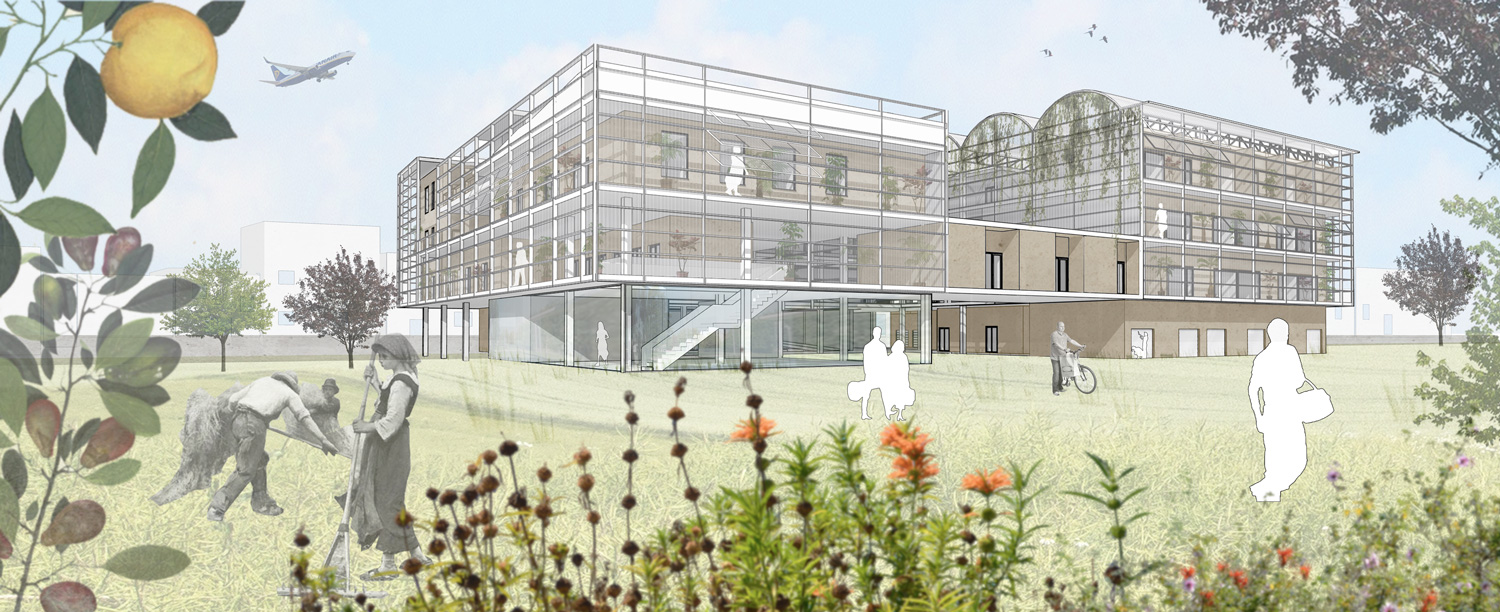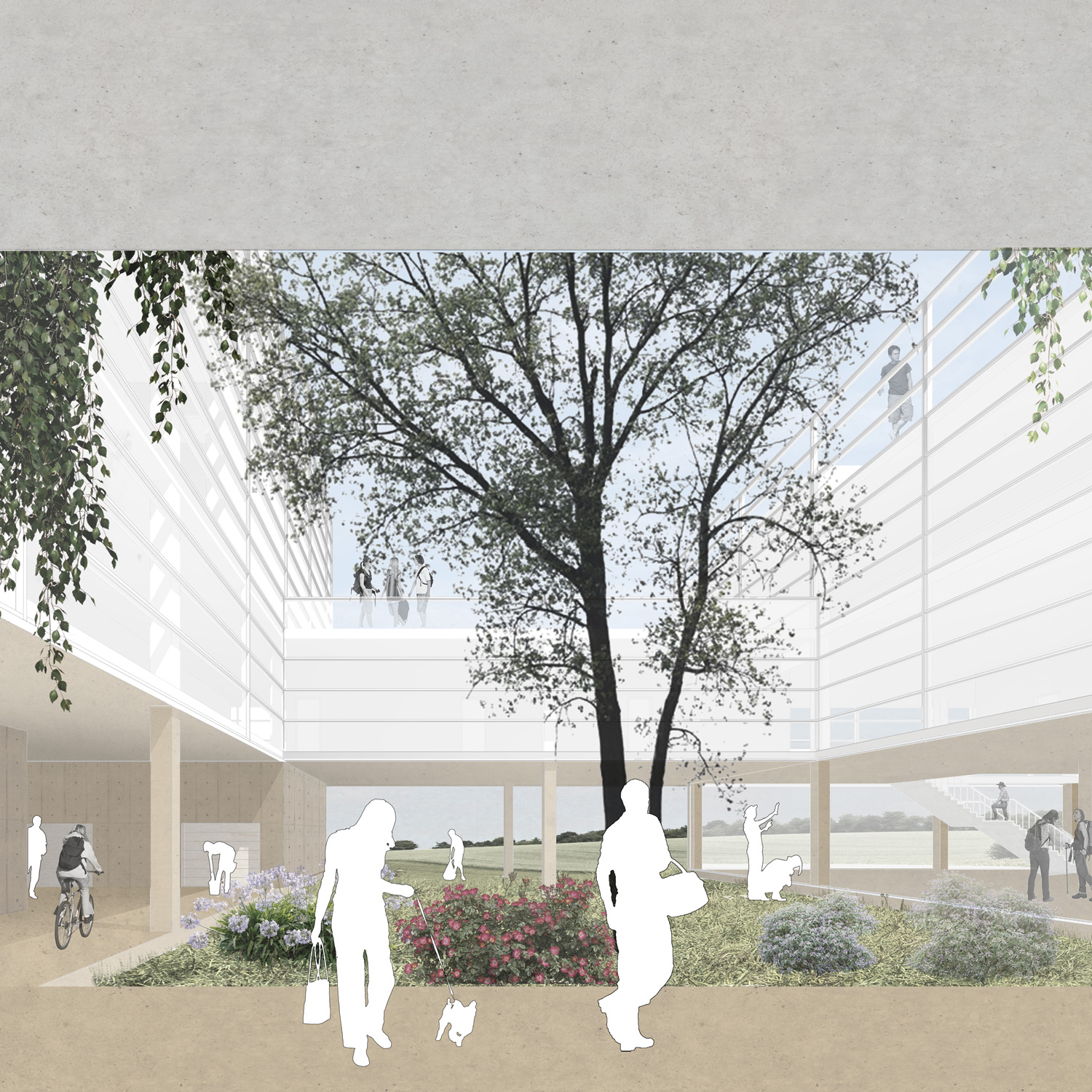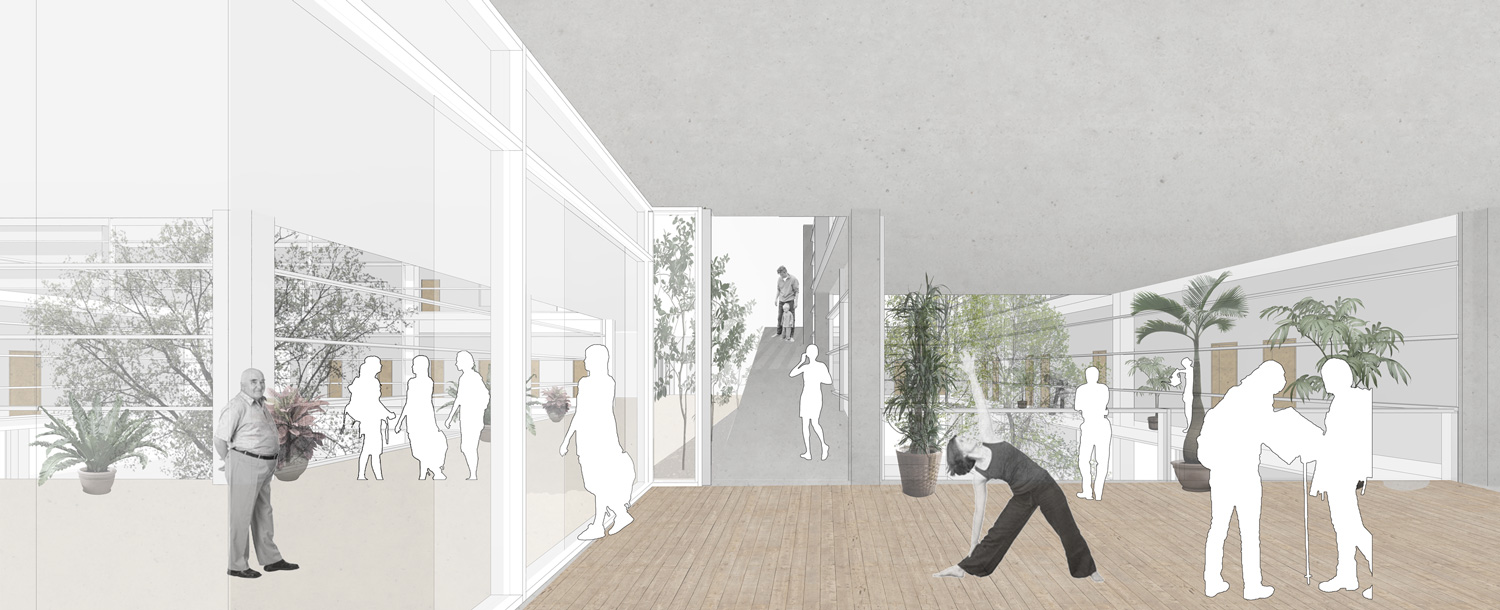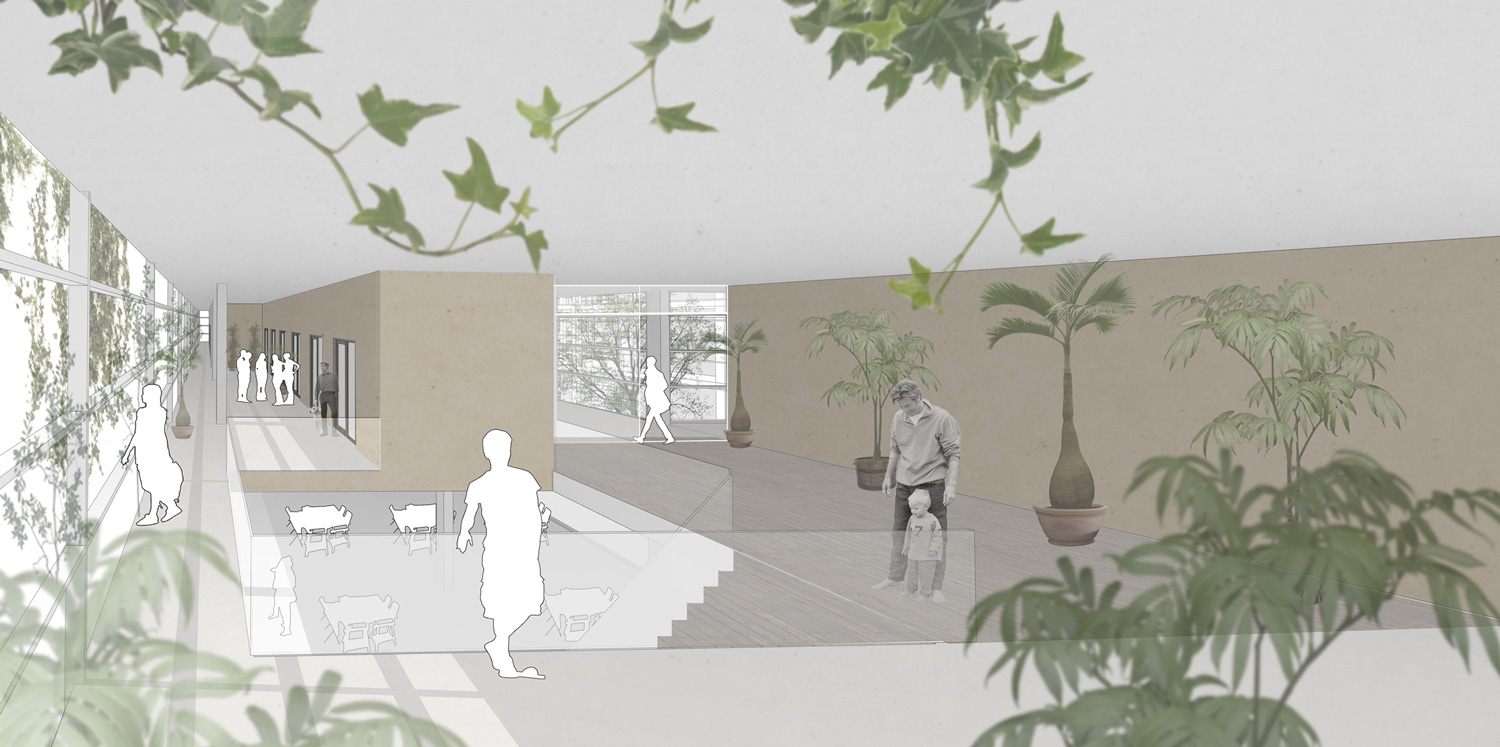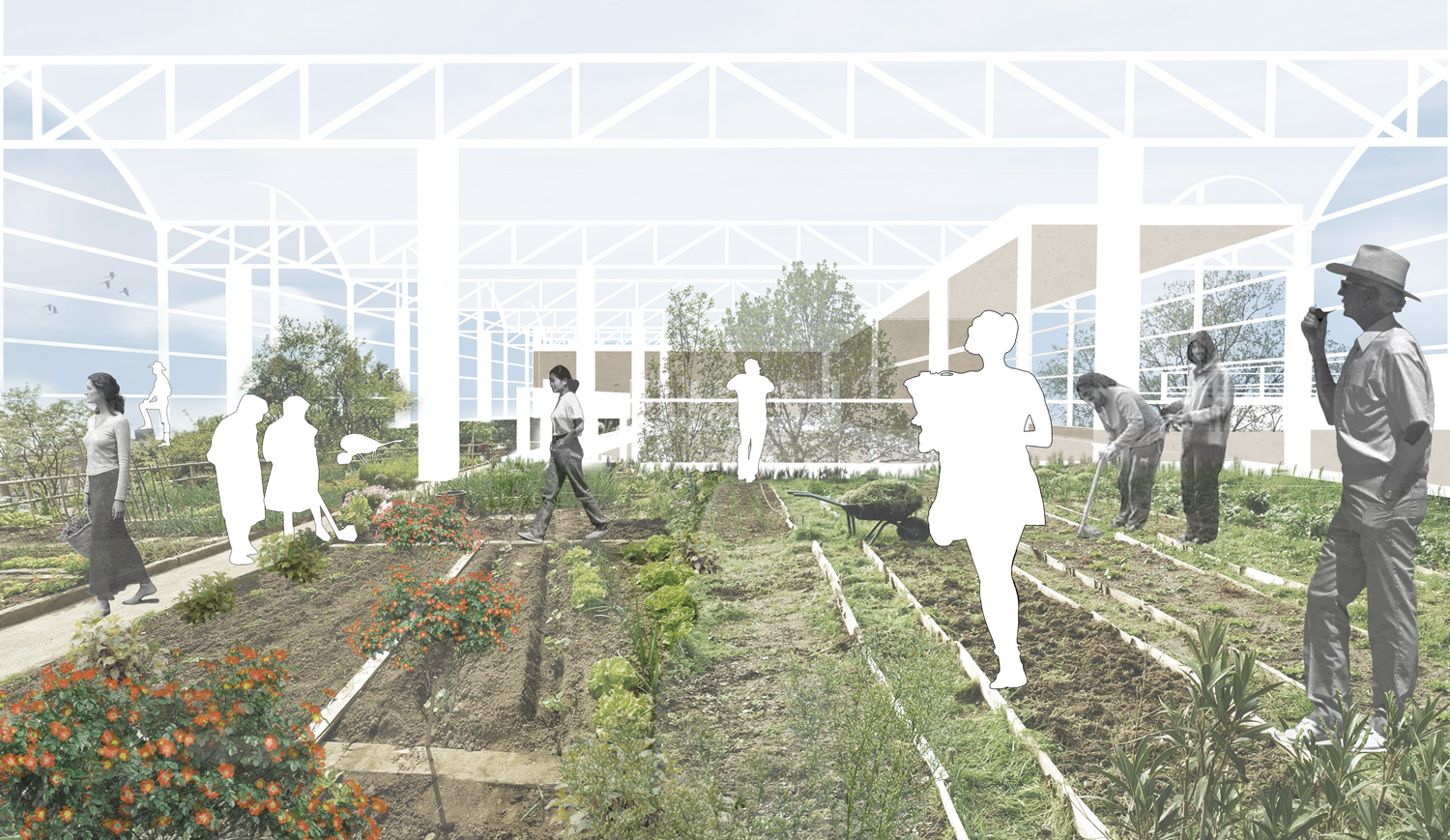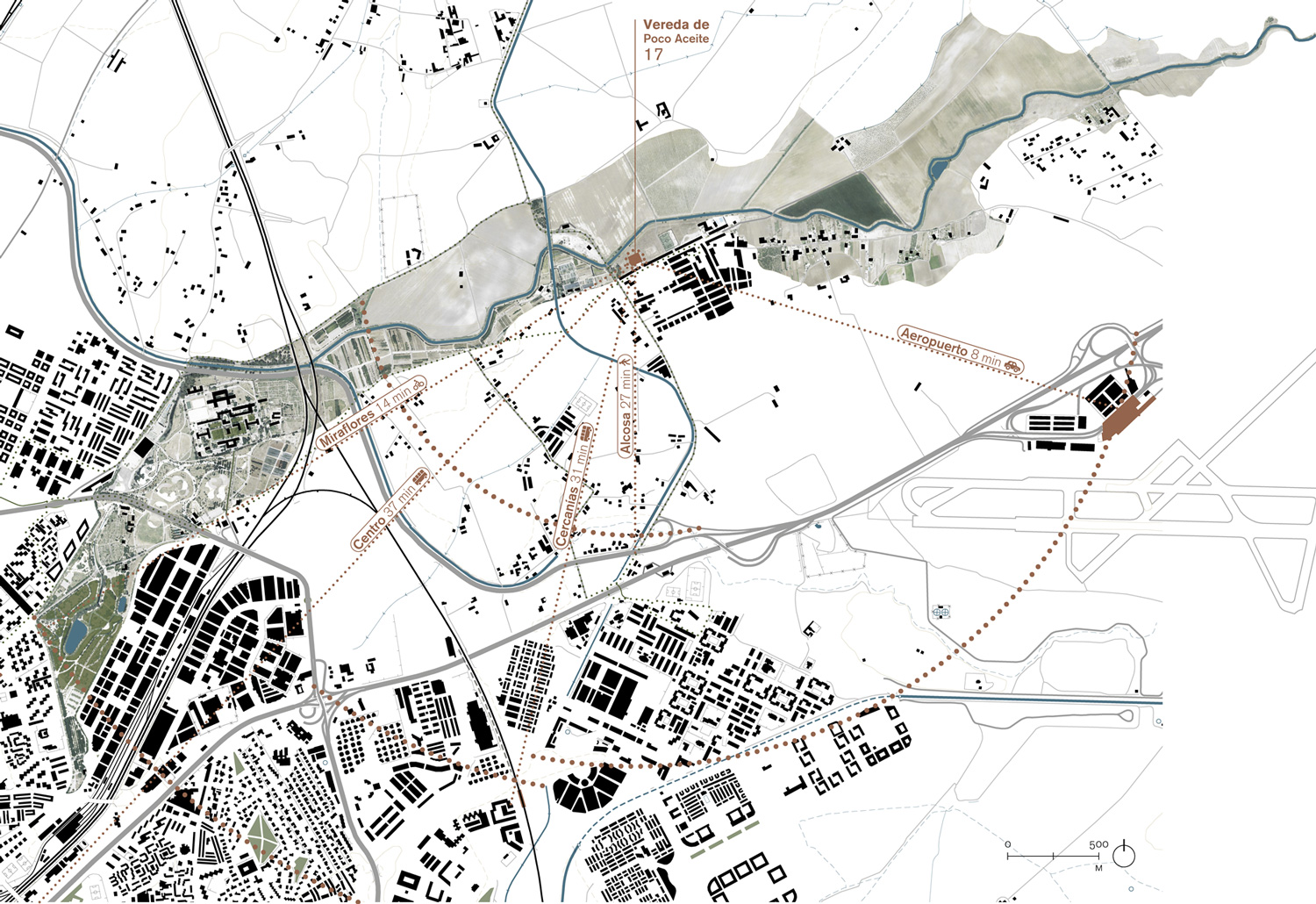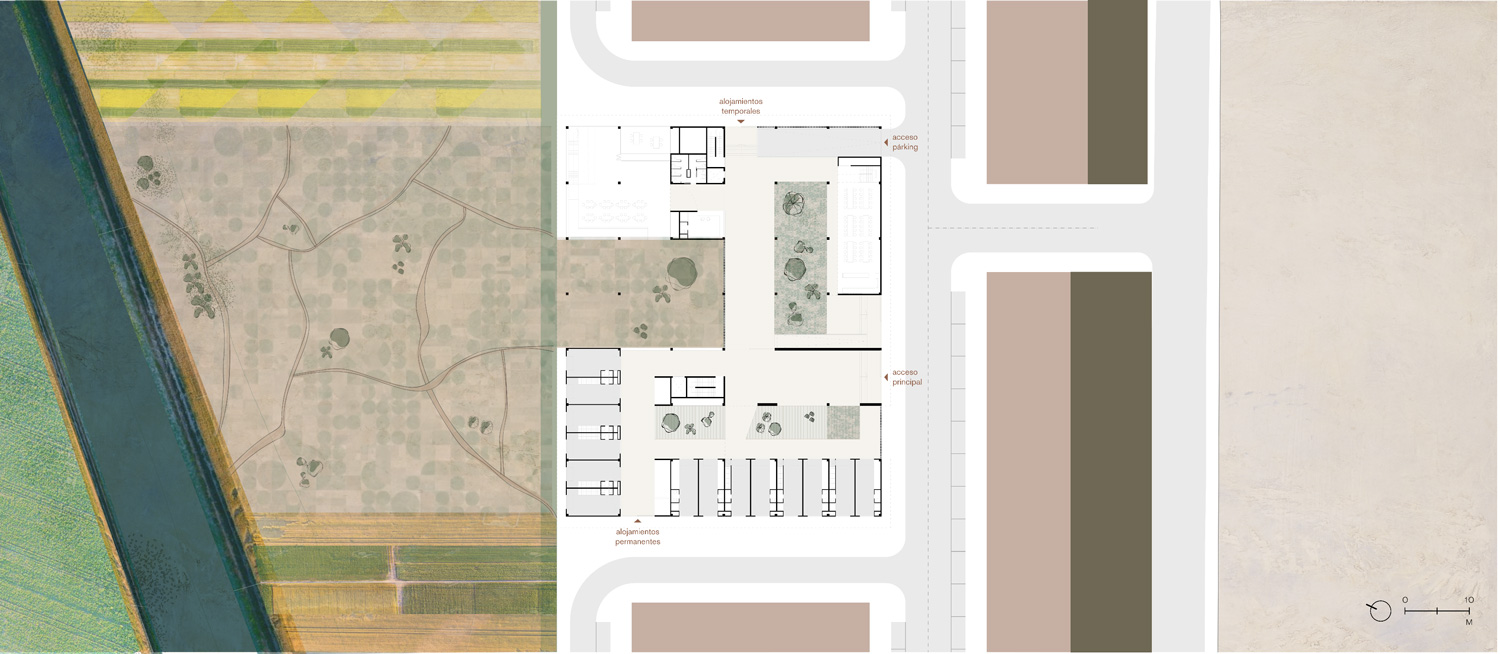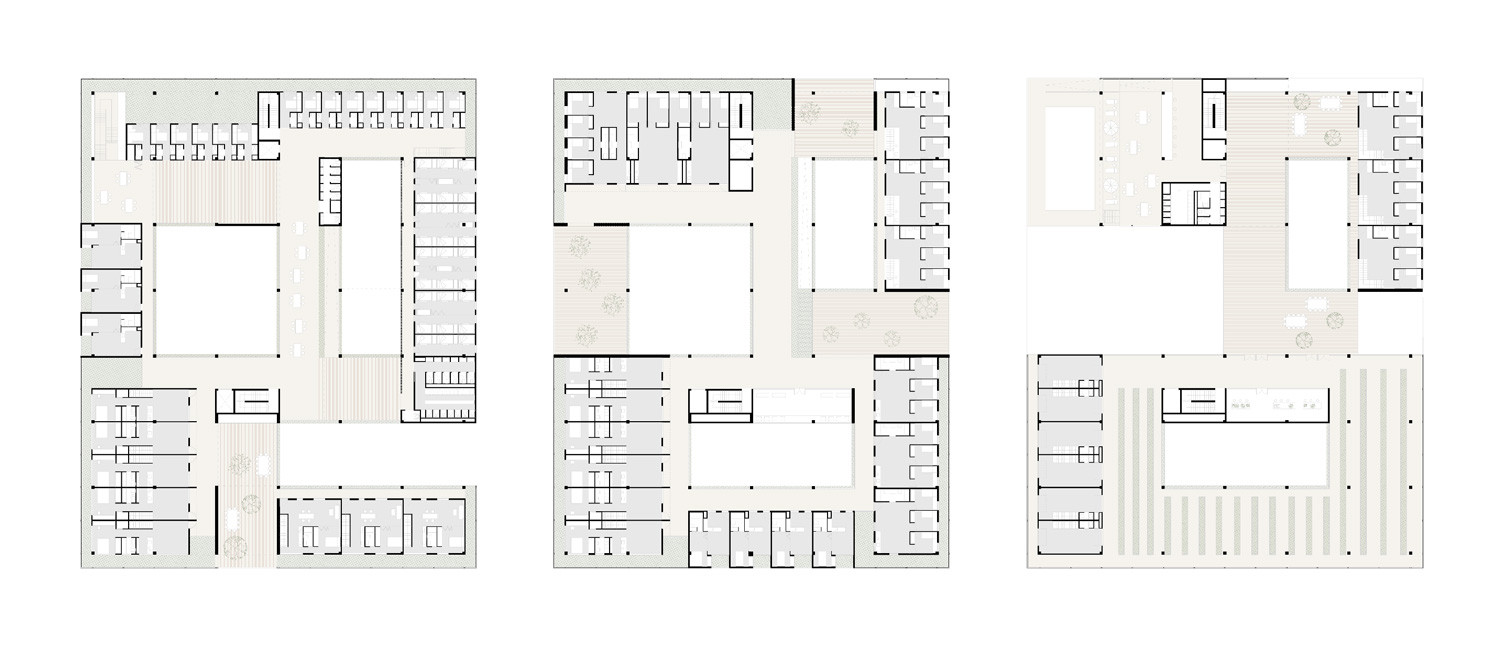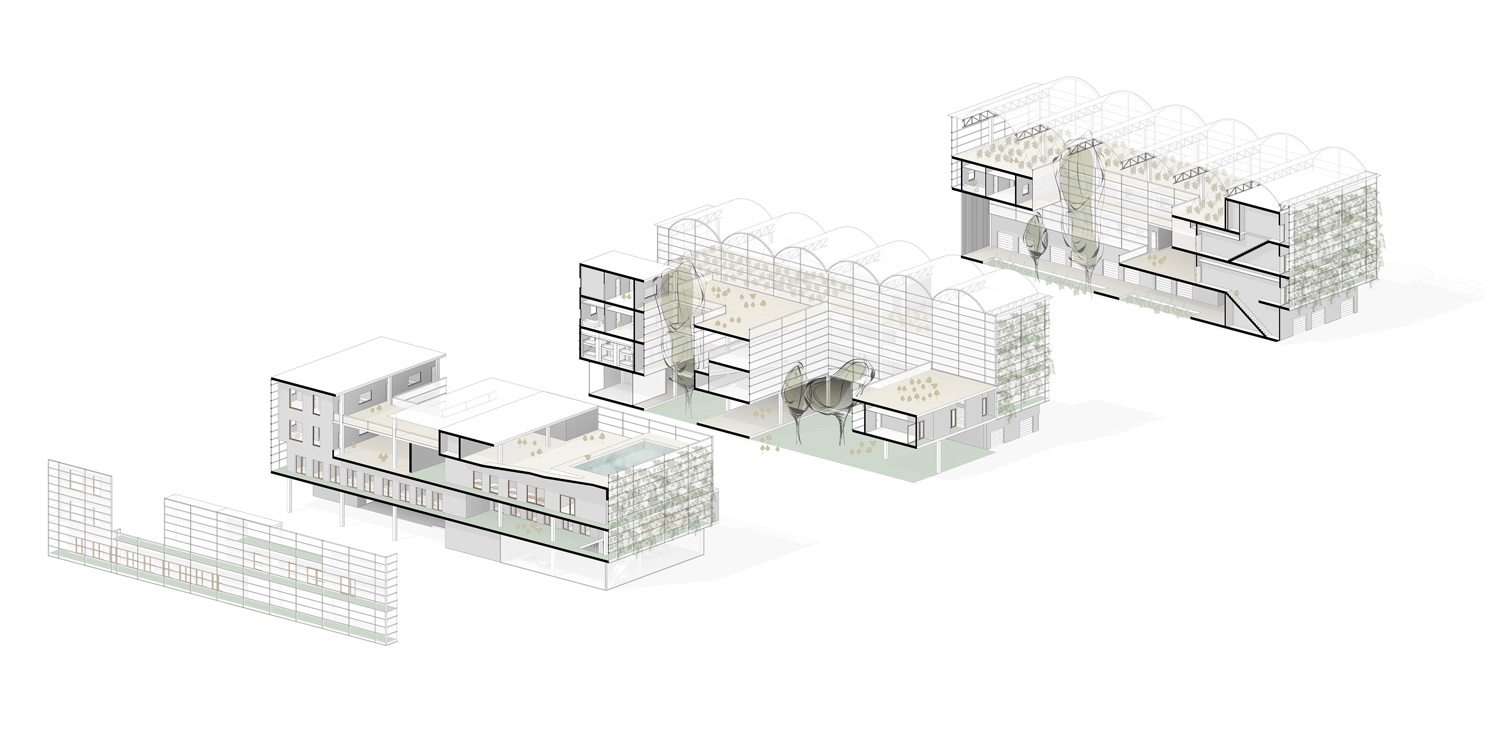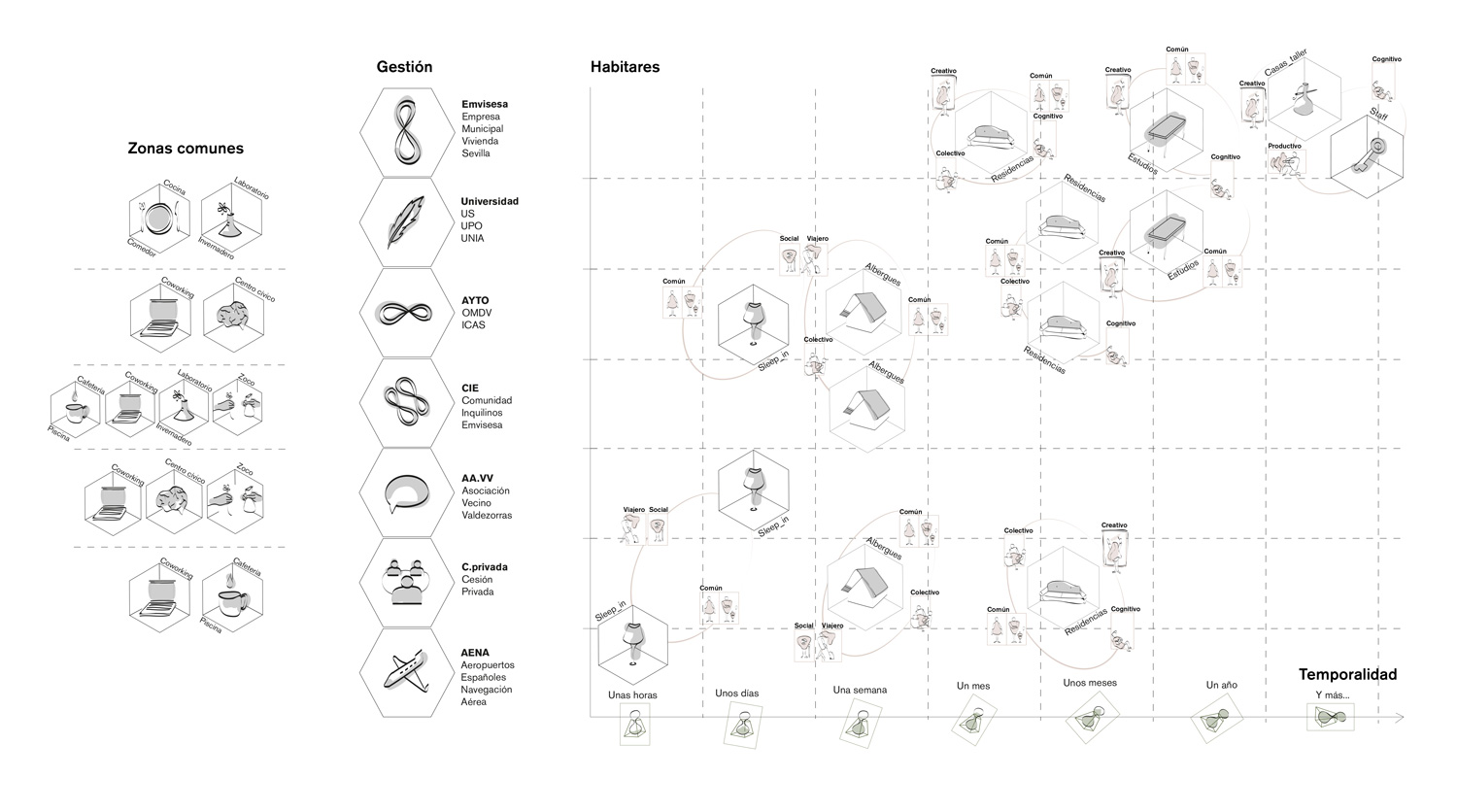2523-AAC-SVQ.ES-2019
Client: EMVISESA
Status: Competition (2019)
Clasification: 1 prize
Location: Valdezorras, Spain
Climate: Mediterranean, Temperate
Materials: Glass, Concrete, Wood
Environment: Urban
Visualizer: Studio
Budget: 380.000 €
Scale: 8.102 ㎡ Medium
Ratio: 46,90 €/㎡
Types: Housing, Residential
Due to the singularity of its bordering position between the rural environment surrounding the nearby Miraflores River and the urban environment of the Valdezorras neighborhood in which it is integrated, the building is considered from the greatest possible visual and physical permeability to favor the connection between the two areas.
That is why it is conceived as a three-storey complex in which residential areas coexist with productive areas and multipurpose romos which behave as a civic center, in which the meeting and the practice of new forms of production are promoted.
The volume of the building, by its open and multifunctional character, is fragmented through three vertical patios that guarantee lighting and ventilation to all the rooms, reducing the consumption of artificial light and, therefore, the internal loads. These patios, as well as the intermediate spaces for common use and the perimeter gallery, house various plant species, improving thermal comfort thanks to the adjustment of the humidity gradient.
The different rooms, whether they are more open or more closed, more private or more public, are protected and enveloped by a low-cost bioclimatic outer skin, built from industrialized agricultural greenhouse systems that, opening and closing automatically, regulate the solar incidence and ventilation. In addition to its impact on the thermal and environmental quality of the interior spaces, this enclosure allows to unify and make the building recognizable as a container of the different activities and ways of living that arise within it.
Valdezorras – Miraflores = agricultural park
From the projected architecture, forms of relationship between the productive and the urban, between the residential dwelling and other habitats associated with the creative activities are considered. The result of this is a proposal for social innovation that generates a process of creation, implementation and dissemination of new social and architectural practices, creating value for society and the neighborhood.
Valdezorras is a settlement associated with a historic area of irrigated lands. The Miraflores River articulates the territory and connects this area with the consolidated city through the park with its same name.
This park is thought as a productive agrarian piece. The figure of Agricultural Park is an instrument of planning that allows to improve the sustainability and territorial cohesion. The park functions as a metropolitan public space and also generates an agrarian dynamisation of which the building (housing and dotational) would be part, contributing to the improvement of this new model of city-country relationship. A complex that produces and generates economies, knowledge and innovations in relation to agrarian-urban.
The location of the project gives a strategic opportunity to think from the building a new relationship between city and countryside. A new relationship with the way we feed ourselves.
To inhabit, to produce, to lodge
Living and production are combined as a complex of accommodation with different types, from which one aspires to take part in the surrounding rural territory. The modularization of the building is understood in this context as a reflex of the current changing reality that demands flexibility, scalability and reproducibility in order to contribute conveniently to the productive city.
The word ‘accommodation’ is loaded with connotations of eventuality, which the building tries to assume starting from the hybridization between the temporary and the permanent. Up to 6 typologies of different durations are developed, from the sleep-in cells or the dorms to the workshop houses or the studios, covering all of them in this way a wide range of times and ways of living.
These residential forms are in turn boosted by spaces that generate knowledge, productive spaces that generate economies, relational spaces that generate empathy and social histories. This includes the neighborhood as an actor of the building, with a multipurpose space as a civic center to serve the neighbors of the environment.
Living together, which was previously summarized in the physical event that involved the neighborhood patio, the corrala or colelctive housing, now must also involve living face to face with the visitor who lives the city in a few hours or days, with the worker which spends some weeks or months, with the social realities at risk… Endless possibilities that demand more heterogeneous and flexible buildings.
